ARCHETYPAL SYMBOLISM
Have you ever wondered why a particular story line keeps playing out in your life? Do you find yourself in the same emotional patterns repeatedly? Have others given you a nickname because of particular traits or behaviors they see in you? These questions and others have mystified and perplexed us since we entered this existence. The stories, patterns, and nicknames are all part of a collective study by great minds known as archetypes.
What is an Archetype?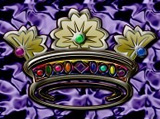 Archetypes are ancient patterns and symbols that emulate roles or characters we portray that are universally recognized. They are both intimate and impersonal. They embody the characteristics in myth and folklore of long ago and are projections of the heroes and villains of today. We act in response to archetypes because they reflect aspects of our own unconsciousness.
Archetypes are ancient patterns and symbols that emulate roles or characters we portray that are universally recognized. They are both intimate and impersonal. They embody the characteristics in myth and folklore of long ago and are projections of the heroes and villains of today. We act in response to archetypes because they reflect aspects of our own unconsciousness.
Archetypes have long been in existence and studied by great minds. Plato argued that behind the appearance of an outer reality lies a deeper truer world of ideas. Plato’s work lead him to explore the symbolism of archetypes hypnotizing that archetypes he called “Forms”, were imprinted on the soul before it was born into the world, believing they remained constant and resulted in universal experiences. These archetypal patterns are present and applied symbolically to our day-to-day existence. It is one way we organize and bring meaning to our lives. They are visual symbols or energetic imprints that exist in our psyche. They are found throughout history and on into present time and will continue as long as we assign meaning to our existence.
Archetypes and Psychology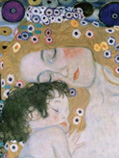 Carl Jung and his supporters explored archetypal symbolism believing it to be a psychology of archetypes. He conceptualized them as a fundamental force that exists beyond us. He defined archetypes as “patterns of behavior”. He believed that the unconscious was twofold that of personal unconscious that is uniquely our own and a collective unconscious that is inherited. An archetypal pattern of thought or symbolic imagery is derived from a past collective experience and present in an individual’s unconsciousness. He purported that the significance of the human experience goes beyond the practical every day existence and assigns meaning that is rooted in archetypal symbolism.
Carl Jung and his supporters explored archetypal symbolism believing it to be a psychology of archetypes. He conceptualized them as a fundamental force that exists beyond us. He defined archetypes as “patterns of behavior”. He believed that the unconscious was twofold that of personal unconscious that is uniquely our own and a collective unconscious that is inherited. An archetypal pattern of thought or symbolic imagery is derived from a past collective experience and present in an individual’s unconsciousness. He purported that the significance of the human experience goes beyond the practical every day existence and assigns meaning that is rooted in archetypal symbolism.
James Hillman approaches archetypal psychology by departing from Jung’s tradition of analytical psychology by focusing on the psyche or soul. He explores this psychology in terms of images rather than explaining them. As images are re-worked, shaped and formed a therapeutic process that he refers to as “soul making” occurs. In his book Re-Visioning Psychology, Hillman speaks of “soul” as an inner place that is an on-going presence. It is what he believes expresses the mystery of life and the connection with psychology to religion, love, death and destiny. Hillman believes along with Jung that archetypes are deep patterns of psychic functioning but takes it further to place importance on the effect that soul has on consciousness. He identifies the nature of soul as what makes meaning possible. Events become experiences that deepen. These experiences are communicated through love, and derived from a relationship with death. He asserts that soul holds the highest importance in the hierarchies of human values, often being associated with the principle of life and divinity.
Archetypes that direct Archetypal Psychology have many variations and the study of them is an on-going and evolving theory. Although the general idea of an archetype is well recognized, there is considerable opinion with regard to their exact nature and the way they result in universal experiences.

Archetypes and the Sacred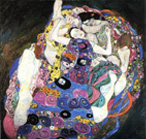 Caroline Myss, author of Sacred Contracts
Caroline Myss, author of Sacred Contracts takes us to a new level of self-discovery building on the common threads in philosophical and spiritual teachings while looking through the lens of archetypes compelling us to shift from a universal mindset to the Sacred. She asserts that we enter this existence with a sacred contract to discover our divine purpose and that as we develop symbolic insight and archetypal language we begin to understand ourselves and heal emotional and spiritual wounds.
This shift to understanding/perceiving our lives as sacred compels us to seek a relationship with the Divine. As we embrace this relationship, we begin to experience life in greater dimension that is multifaceted and intertwined. It empowers us to move from a fated shadow life into the light and life we are destined for that which is full of potential and greater purpose.
Myss asserts there are twelve archetypal patterns that make up our personal “Archetypal Wheel”. This wheel consists of twelve houses. We begin with four archetypes of survival that we all share in common. They include Child, Victim, Prostitute, and Saboteur that symbolize life challenges and how we use our personal power to support life. They serve as the foundation for the remaining eight, which you have chosen from a vast number of archetypes before entering this life to best represent you and serve to reveal your life purpose.
The Archetypes of Survival
According to Myss, there are four universal archetypes constant in our life that symbolizes major life challenges related to the physical dimension of survival. The archetypes—the Child, Victim, Prostitute and Saboteur represent the major life challenges and how we survive. These four archetypes influence how we relate to material power, respond to authority, and the choices we make. They are the “companions” of our intuition and “guardians” of our integrity, supporting independence, self-esteem, and empowerment.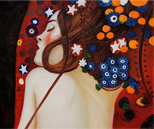 The Child archetype is the guardian of innocence. The playful nature of the child is a delight to be around because it brings out our best and in those around us. It is through this archetype that our perceptions of life, safety, nurturance, loyalty, and family are established. The child establishes our independence by taking responsibility, standing up for our self, and embracing community.
The Child archetype is the guardian of innocence. The playful nature of the child is a delight to be around because it brings out our best and in those around us. It is through this archetype that our perceptions of life, safety, nurturance, loyalty, and family are established. The child establishes our independence by taking responsibility, standing up for our self, and embracing community.
The Child archetype also includes aspects of the child in response to different situations. These aspects include Wounded, Orphaned, Dependent, Magical, Nature, and Divine Child. The energies manifest in response to different situations we may face. The shadow manifests when the stages are not fully developed we will exhibit aspects of dependency. The core issue of the child in all aspects is dependency vs. responsibility. The lesson is to take responsibility for taking care of ourselves. As we move through the stages of development, we learn how to have healthy dependency, stand up for ourselves, and be responsible for our actions. The role of the Child Archetype is to helps us embrace the sense that everything is possible and be inspired to explore possibilities.
The Victim archetype is the guardian of self-esteem. The Victim alerts us to the possibility of being victimized and our tendency to victimize others. The shadow manifests when we are taken advantage of and it is never our fault. The core issue of the victim is to recognize these attitudes and learn how to handle the challenges. The lesson is to evaluate your use of power. It is being able to make choices and live with them. The role of the Victim Archetype is to help you develop self-esteem through acts of honesty, respect, integrity, courage, and endurance.
The Prostitute is the guardian of faith. The Prostitute alerts us when we are about to sell out or compromise our body, mind, or spirit. It reveals itself when our survival is threatened. The shadow manifests when we want to take shortcuts to our own empowerment. The core issue is how much we are willing to sell of our selves —morals, integrity, intellect, body, or soul for security. The lesson is to learn to confront our fears of survival. The role of the Prostitute Archetype is to help us develop faith that keeps us from compromising our integrity. When we can take care of ourselves, we will not let anyone buy us and believe the Divine is watching over us.
The Saboteur is the guardian of choice. The Saboteur alerts us of our fears in taking responsibility for ourselves and for what we create. This archetype is personally connected to our ability to survive. The core issue is fear of inviting change that requires responding in positive ways that transform our life. The shadow expresses itself through behaviors that sabotage our wishes and the image we hold of ourselves. The lesson is to make choices that empower change and support opportunities to enhance the environment of our lives life. The Saboteur Archetype is to help us manifest courage in making choices to act by following our intuition. When we listen and respond we will expand our creative environment.
The Shadow Aspect
Archetypal patterns are essentially neutral. The shadow aspect would suggest a dark expression that appears in our nature that will do harm if unrestrained. It is  important to understand that the shadow aspects of our archetypes represent the part of us that is least familiar to us. As the name implies the shadow looms just out of view. To understand the neutrality of the shadow aspect we must embrace the paradox in relationship to power. The shadow is unexplored power expressed as loss of control. When change occurs, we enter into the unknown, which manifest either as fear of change or isolation due to embracing changes.
important to understand that the shadow aspects of our archetypes represent the part of us that is least familiar to us. As the name implies the shadow looms just out of view. To understand the neutrality of the shadow aspect we must embrace the paradox in relationship to power. The shadow is unexplored power expressed as loss of control. When change occurs, we enter into the unknown, which manifest either as fear of change or isolation due to embracing changes.
Archetypes as companions and guides
Each archetype has its own story to tell. They become our companions and serve as guides to support personal development. The work is to learn to recognize the archetypal patterns at work in our lives. As we work with the archetypal patterns, we become conscious of ourselves, and the effects of our actions. Through deliberate choice, we then empower ourselves.
These four archetypes of survival that we each possess, symbolize life challenges and how we use our personal power to support life. They serve as the foundation for the remaining eight, which are chosen from a vast number of archetypes that you have chosen to best represent you and serve to reveal your life purpose.
Archetypes and the Chakras
The archetypes we live out mirror how we manifest self-care and worthiness and to what degree we love and cherish ourselves. They also are representative of the vitality and degree of creativity and pleasure we enjoy.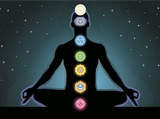 Ambika Wauters in her book Chakras and Their Archetypes
Ambika Wauters in her book Chakras and Their Archetypes speaks of the correlation between personal responsibility and levels of energy and empowerment that each archetype possesses. She asserts that the more willing we are to take responsibility for our life the more developed our archetypes will become.
Archetypes and chakras together represent a portion of our emotional state. So then, the degree to which positive or negative energy flows within each chakra will correspond to how an archetype lives out in our lives. When we negotiate away our power, we will experience an imbalance in the Chakra System. Working with the chakras will help us understand where our energy is blocked. Working with the archetypes in relationship to each chakra will show us what attitudes or emotional issues that are blocking the flow of energy.
I can work with you, to understand the influences that the survival and other archetypes have on your life and how to recognize how you are negotiating your power. As you learn to embrace the archetypes as companions and trust them as your guides, you will begin to live with independence, self-esteem, integrity, and empowerment to support a congruent and authentic life.





